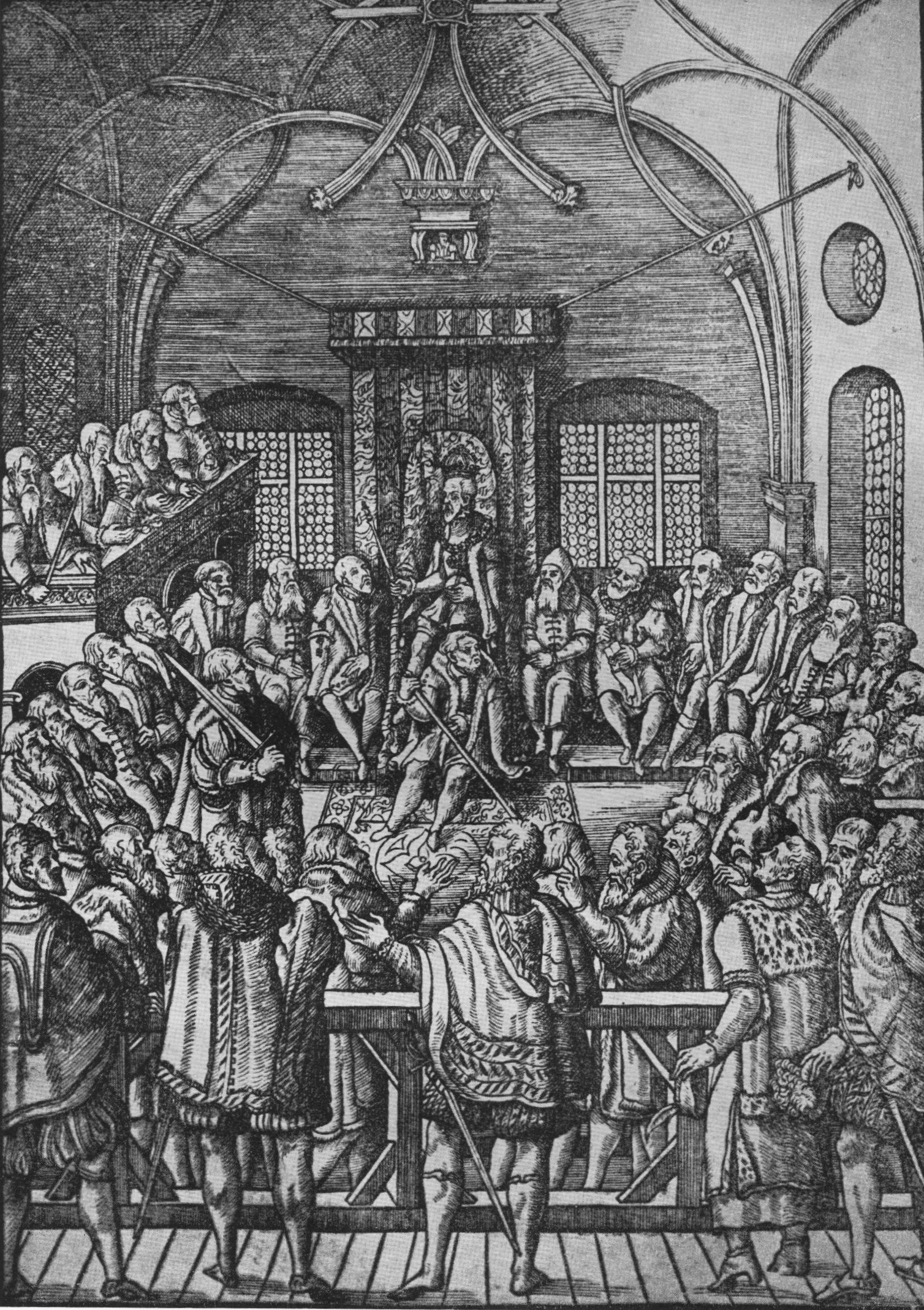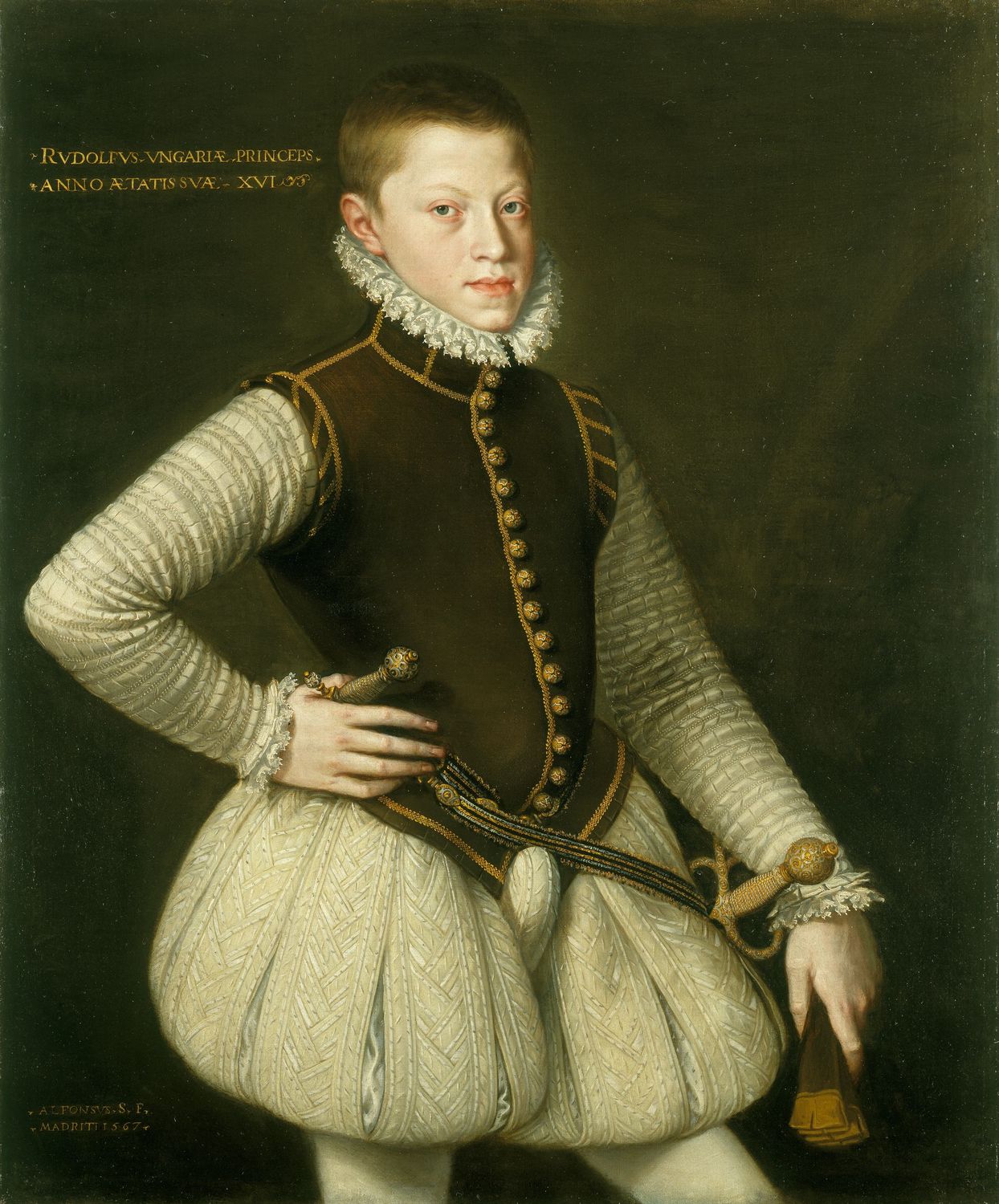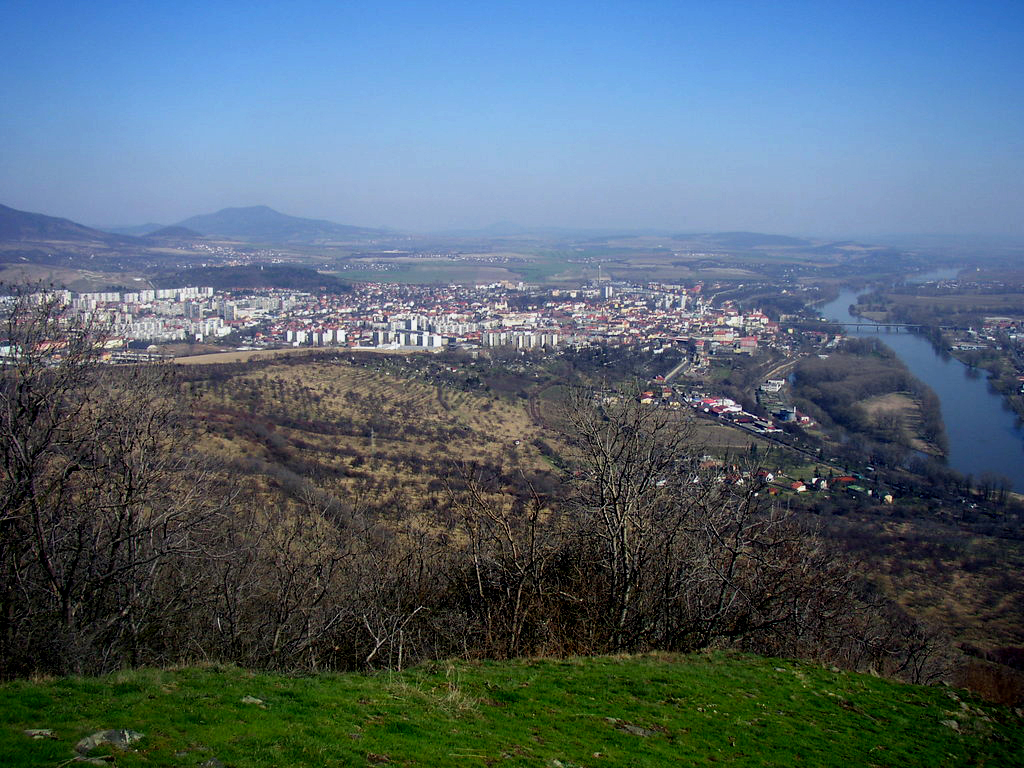|
House Of Kinsky
The House of Kinsky (formerly Vchynští, sg. ''Vchynský'' in Czech; later (in modern Czech) Kinští, sg. ''Kinský''; ) is a prominent Bohemian noble family originating in the Kingdom of Bohemia. During the Thirty Years' War, the Kinsky family rose from minor nobles to comital rank (1628) and later princely status (1747) under the rule of the Habsburgs. The family, recorded in the '' Almanach de Gotha'', is considered to have been one of the most illustrious of Austria-Hungary. History According to romantic medieval legend, the Kinsky story began in Bohemia over 1,000 years ago, when a king's beautiful daughter went out hunting in the forest and was attacked by a pack of wolves. Her attendants all fled the terrible scene except for one young man, who saved the princess by killing some wolves and driving the rest away. In gratitude, the girl's father ennobled the young man, granting him a coat of arms featuring three wolves' teeth as an emblem of his bravery. Rise The fir ... [...More Info...] [...Related Items...] OR: [Wikipedia] [Google] [Baidu] |
Kingdom Of Bohemia
The Kingdom of Bohemia (), sometimes referenced in English literature as the Czech Kingdom, was a History of the Czech lands in the High Middle Ages, medieval and History of the Czech lands, early modern monarchy in Central Europe. It was the predecessor state of the modern Czech Republic. The Kingdom of Bohemia was an Imperial State in the Holy Roman Empire. The List of Bohemian monarchs, Bohemian king was a prince-elector of the empire. The kings of Bohemia, besides the region of Bohemia itself, also ruled other Lands of the Bohemian Crown, lands belonging to the Bohemian Crown, which at various times included Moravia, Silesia, Lusatia, and parts of Saxony, Brandenburg, and Bavaria. The kingdom was established by the Přemyslid dynasty in the 12th century by the Duchy of Bohemia, later ruled by the House of Luxembourg, the Jagiellonian dynasty, and from 1526 the House of Habsburg and its successor, the House of Habsburg-Lorraine. Numerous kings of Bohemia were also elected Hol ... [...More Info...] [...Related Items...] OR: [Wikipedia] [Google] [Baidu] |
Bohemia
Bohemia ( ; ; ) is the westernmost and largest historical region of the Czech Republic. In a narrow, geographic sense, it roughly encompasses the territories of present-day Czechia that fall within the Elbe River's drainage basin, but historically it could also refer to a wider area consisting of the Lands of the Bohemian Crown ruled by the List of Bohemian monarchs, Bohemian kings, including Moravia and Czech Silesia, in which case the smaller region is referred to as Bohemia Proper as a means of distinction. Bohemia became a part of Great Moravia, and then an independent principality, which became a Kingdom of Bohemia, kingdom in the Holy Roman Empire. This subsequently became a part of the Habsburg monarchy and the Austrian Empire. After World War I and the establishment of an History of Czechoslovakia (1918–1938), independent Czechoslovak state, the whole of Bohemia became a part of Czechoslovakia, defying claims of the German-speaking inhabitants that regions with German ... [...More Info...] [...Related Items...] OR: [Wikipedia] [Google] [Baidu] |
Protestantism
Protestantism is a branch of Christianity that emphasizes Justification (theology), justification of sinners Sola fide, through faith alone, the teaching that Salvation in Christianity, salvation comes by unmerited Grace in Christianity, divine grace, the priesthood of all believers, and the Bible as the sole infallible source of authority for Christian faith and practice. The five solae, five ''solae'' summarize the basic theological beliefs of mainstream Protestantism. Protestants follow the theological tenets of the Reformation, Protestant Reformation, a movement that began in the 16th century with the goal of reforming the Catholic Church from perceived Criticism of the Catholic Church, errors, abuses, and discrepancies. The Reformation began in the Holy Roman Empire in 1517, when Martin Luther published his ''Ninety-five Theses'' as a reaction against abuses in the sale of indulgences by the Catholic Church, which purported to offer the remission of the Purgatory, temporal ... [...More Info...] [...Related Items...] OR: [Wikipedia] [Google] [Baidu] |
Vilém Kinský
Count Wilhelm Kinsky von Wchinitz (; ; 1574 – 25 February 1634) was a landowner and a statesman. By birth, he was member of the Kinsky, House of Kinsky, which belonged to the highest circle of Bohemian aristocracy. Early life Wilhelm was born as the younger son of Johann Kinsky von Wchinitz, Burgrave, Burggraf of Karlštejn (1540-1590) and his wife, Anna Pauzar von Michnic (d. 1598), daughter of :File:Jan_Pauzar_z_Michnic_-_epitaf,_kostel_Žumberk.png, Johann Pauzar von Michnic. Biography In 1628, Wilhelm Kinsky was elevated to the rank of Count in the Bohemian nobility when Wallenstein was elevated to Duchy of Friedland. As a rich landowner in Bohemia, Kinsky lived in exile at Dresden after the Battle of White Mountain, because he was a Protestantism, Protestant and, unlike the members of the Trčka family, had refused to convert to the Catholic Church, Catholic faith but was allowed to regularly visit his Bohemian estates. Subsequently, together with his brother-in-law A ... [...More Info...] [...Related Items...] OR: [Wikipedia] [Google] [Baidu] |
Diet Of Bohemia
The Bohemian Diet (, ) was the parliament of the Kingdom of Bohemia within the Austro-Hungarian Empire between 1861 and Czechoslovak independence in 1918. The Diet during the Absolutist Period In 1471, the Bohemian estates elected the Jagiellon Vladislav II as their king. In 1500, the Land Assembly approved the '' Vladislav Land Establishment,'' named after the king, which gave the Bohemian noblemen an extensive share in political co-decision and is also considered to be the oldest written Czech constitution. The chairman of the assembly was called the '' Supreme Burgrave'' ('','' ). He led talks with eight jurors appointed by the assembly, two from each state. After the defeat of the Bohemian estates in the Battle of White Mountain, Ferdinand II would proclaim in 1627 for Bohemia and 1628 for Moravia the '' Renewed Regional Code'', in which the monopoly position of the states was abolished in favour of the provincial government. Despite these limitations, the Diet an ... [...More Info...] [...Related Items...] OR: [Wikipedia] [Google] [Baidu] |
Ennoblement
Ennoblement is the conferring of nobility—the induction of an individual into the noble class. Currently only a few kingdoms still grant nobility to people; among them Spain, the United Kingdom, Belgium and the Vatican. Depending on time and region, various laws have governed who could be ennobled and how. Typically, nobility was conferred on individuals who had assisted the sovereign. In some countries (e.g. France under the ''Ancien Régime''), this degenerated into the buying of patents of nobility, whereby rich commoners (e.g. merchants) could purchase a title of nobility. Ennobling qualities Medieval theorists of nobility relied on earlier classical concepts (Platonic, Aristotelian and Christian-Hellenistic) of what personal traits and virtues constitute grounds for ennoblement. In Plato's Republic, he provides for promotion and degradation of citizens according to a strict spiritual meritocracy. In the words of Will Durant, "If the ruler's son is a dolt he falls at ... [...More Info...] [...Related Items...] OR: [Wikipedia] [Google] [Baidu] |
Rudolf II, Holy Roman Emperor
Rudolf II (18 July 1552 – 20 January 1612) was Holy Roman Emperor (1576–1612), King of Hungary and Kingdom of Croatia (Habsburg), Croatia (as Rudolf I, 1572–1608), King of Bohemia (1575–1608/1611) and Archduke of Austria (1576–1608). He was a member of the House of Habsburg. Rudolf's legacy has traditionally been viewed in three ways:Hotson, 1999. an ineffectual ruler whose mistakes led directly to the Thirty Years' War; a great and influential patron of Northern Mannerism, Northern Mannerist art; and an intellectual devotee of occult arts and learning which helped seed what would be called the Scientific Revolution. Determined to unify Christendom, he initiated the Long Turkish War (1593–1606) with the Ottoman Empire. Exhausted by war, his citizens in Kingdom of Hungary (1526-1867), Hungary revolted in the Bocskai uprising, Bocskai Uprising, which led to more authority being given to his brother Matthias, Holy Roman Emperor, Matthias. Under his reign, there was ... [...More Info...] [...Related Items...] OR: [Wikipedia] [Google] [Baidu] |
House Of Habsburg
The House of Habsburg (; ), also known as the House of Austria, was one of the most powerful Dynasty, dynasties in the history of Europe and Western civilization. They were best known for their inbreeding and for ruling vast realms throughout Europe during the Middle Ages and early modern period, including the Holy Roman Empire and Habsburg Spain, Spain. The house takes its name from Habsburg Castle, a fortress built in the 1020s in present-day Switzerland by Radbot of Klettgau, who named his fortress Habsburg. His grandson Otto II, Count of Habsburg, Otto II was the first to take the fortress name as his own, adding "Count of Habsburg" to his title. In 1273, Count Radbot's seventh-generation descendant, Rudolph I of Germany, Rudolph, was elected King of the Romans. Taking advantage of the extinction of the Babenbergs and of his victory over Ottokar II of Bohemia at the Battle on the Marchfeld in 1278, he appointed his sons as Dukes of Austria and moved the family's power base ... [...More Info...] [...Related Items...] OR: [Wikipedia] [Google] [Baidu] |
Litoměřice
Litoměřice (; ) is a town in the Ústí nad Labem Region of the Czech Republic. It has about 23,000 inhabitants. The historic town centre is well preserved and is protected as an urban monument reservation. The town is the seat of the Roman Catholic Diocese of Litoměřice. Administrative division Litoměřice consists of four municipal parts (in brackets population according to the 2021 census): *Litoměřice-Město (1,503) *Pokratice (4,436) *Předměstí (17,483) *Za nemocnicí (10) Geography Litoměřice is located about south of Ústí nad Labem and northwest of Prague. The northwestern half of the municipal territory lies in the Central Bohemian Uplands, the southeastern half lies in the Lower Ohře Table, on the edge of the Polabí lowlands. The highest point, located in the northern tip of the territory, is at above sea level. The town is situated on the right (northern) bank of the Elbe River, at its confluence with the Ohře, which flows from the south. H ... [...More Info...] [...Related Items...] OR: [Wikipedia] [Google] [Baidu] |
Vchynice
Vchynice is a municipality and village in Litoměřice District in the Ústí nad Labem Region of the Czech Republic. It has about 300 inhabitants. Vchynice lies approximately west of Litoměřice, south of Ústí nad Labem, and north-west of Prague Prague ( ; ) is the capital and List of cities and towns in the Czech Republic, largest city of the Czech Republic and the historical capital of Bohemia. Prague, located on the Vltava River, has a population of about 1.4 million, while its P .... Administrative division Vchynice consists of five municipal parts (in brackets population according to the 2021 census): *Vchynice (229) *Radostice (48) Demographics References External links * Villages in Litoměřice District House of Kinsky {{ÚstínadLabem-geo-stub ... [...More Info...] [...Related Items...] OR: [Wikipedia] [Google] [Baidu] |
Wenceslaus I Of Bohemia
Wenceslaus I (; c. 1205 – 23 September 1253), called One-Eyed, was King of Bohemia from 1230 to 1253. Wenceslaus was a son of Ottokar I of Bohemia and his second wife Constance of Hungary. Marriage and children In 1224, Wenceslaus married Kunigunde of Hohenstaufen, third daughter of Philip of Swabia, King of Germany, and his wife Irene Angelina. Wenceslaus encouraged large numbers of Germans to settle in the villages and towns in Bohemia and Moravia. Stone buildings began to replace wooden ones in Prague as a result of the influence of the new settlers. Wenceslaus and Kunigunde had five known children: * Vladislaus III of Moravia (c. 1228 – 3 January 1247) *Ottokar II of Bohemia (c. 1230 – 26 August 1278) * Beatrice (c. 1231 – 27 May 1290), who married Otto III of Brandenburg *Agnes (died 10 August 1268), who married Henry III of Meissen *A daughter who died young Early reign On 6 February 1228, Wenceslaus was crowned as co-ruler of the Kingdom of Bohemia with ... [...More Info...] [...Related Items...] OR: [Wikipedia] [Google] [Baidu] |
Přemyslid Dynasty
The Přemyslid dynasty or House of Přemysl (, , ) was a Bohemian royal dynasty that reigned in the Duchy of Bohemia and later Kingdom of Bohemia and Margraviate of Moravia (9th century–1306), as well as in parts of Poland (including Silesia), Hungary and Austria. Origin and rise The dynasty's origin dates back to the 9th century, when the Přemyslids ruled a tiny territory around Prague, populated by a tribe of the Western Slavs. Their name comes from the mythical ancestor figure of Přemysl the Ploughman. Gradually they expanded, conquering much of the region of Bohemia, located in the Bohemian basin where it was not threatened by the expansion of the Frankish Empire. The first historically-documented Přemyslid duke was Bořivoj I (867). DNA testing on the remains of his son, Spytihněv I, reveal the family's Y-haplogroup to be R1b, second most common haplogroup in Czech republic. In the following century, the Přemyslids also ruled over Silesia and founded the ci ... [...More Info...] [...Related Items...] OR: [Wikipedia] [Google] [Baidu] |







